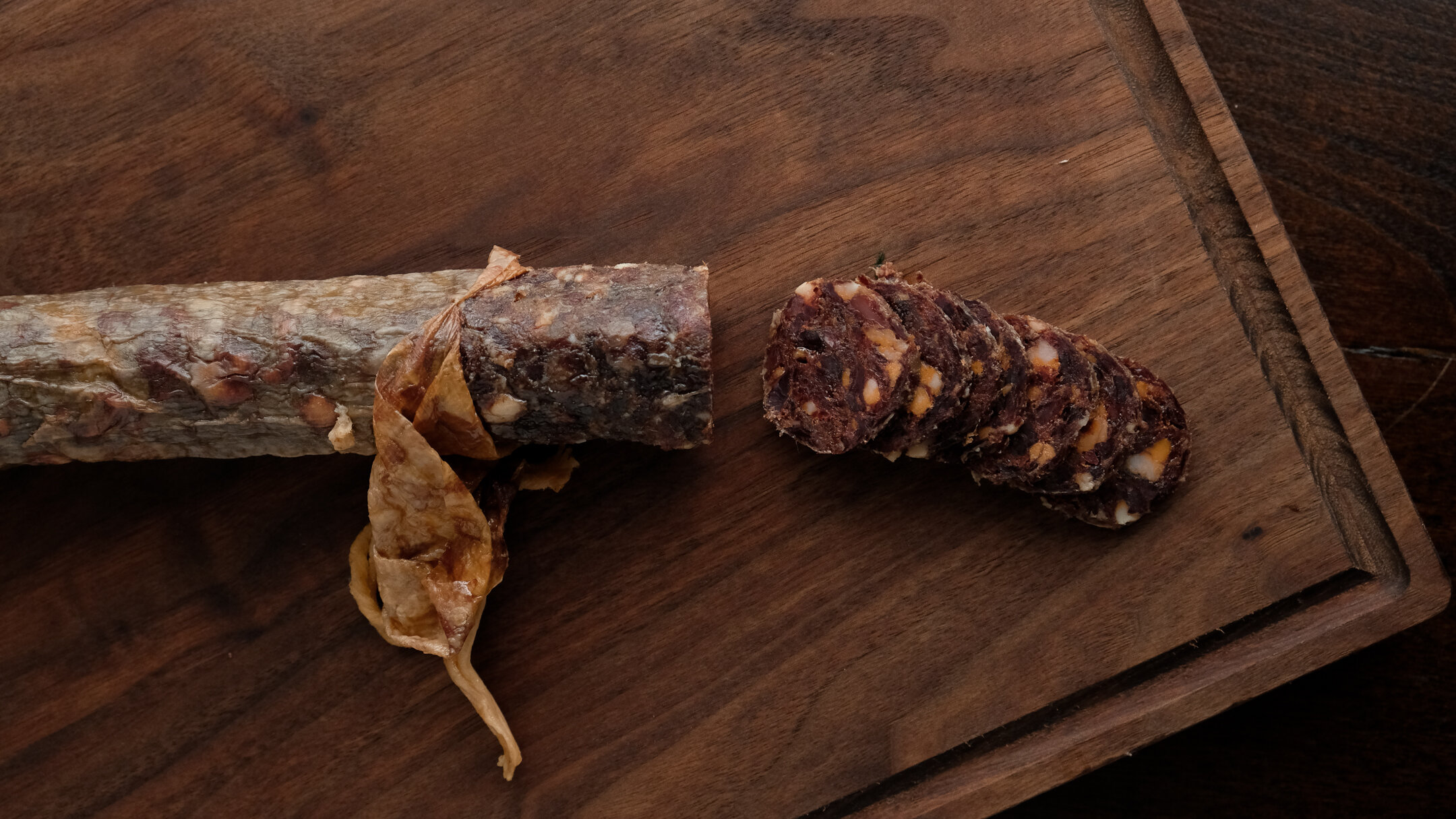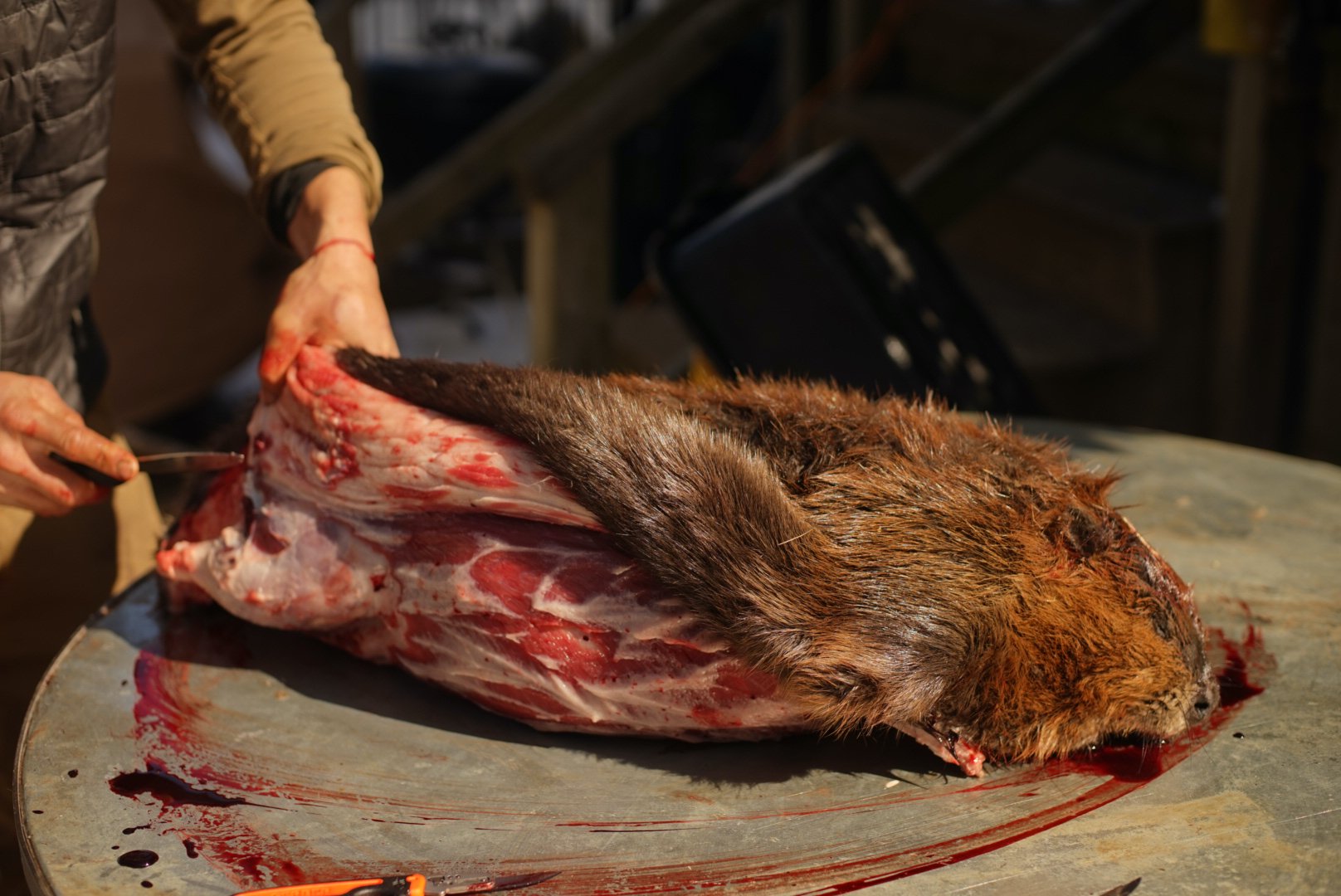Beaver Chorizo

If you've made our venison spanish chorizo before, this is essentially the same recipe. In our opinion, switching out the protein generally wouldn't constitute a new recipe, but in the case of beaver meat as food, we think the more recipes, the better. Aside from the stories of mountain men eating the tails (everyone’s favorite trivia fact) there’s not a whole lot of reputable information on beaver meat, and even fewer recipes.
Beavers have a lot working against them in the food branding department. To start with, they’re technically rodents, and plenty of people will have a hard time getting over the mere idea of eating a rodent. Secondly, some people who trap beavers do it as a measure to prevent property damage, and when you view an animal as a “pest” that you are trying to exterminate, it’s hard to get behind valuing the meat. Other trappers are focused only on pelts, and may not check their trap line every day. The meat can begin to spoil quite quickly, and so they never consider trying it. Finally, a whole lot of people are fond of beavers, and for good reason- they’re cute, pretty sociable, and do a whole lot of good for wildlife habitat.
So why bother with beaver meat?
To begin with, beaver meat is absolutely delicious. We can’t say enough about it, honestly. The meat is garnet red and lean, with a wonderful flavor that lands somewhere between bison, elk and whitetail. They eat a clean, vegetarian diet, and we haven’t had one yet that we’d describe as gamy or marshy. The backstraps are great grilled up medium rare, and the legs and tail muscle braise down beautifully into a beefy stew. The fat is great too- rendered down, it reminds us of pork lard, and we’ve used it in all sorts of culinary applications.
Plus, beaver trapping can be a sustainable and ethical way to source wild protein. We’ve been trapping the same areas for years, and have been able to take quite a few beavers off the land without knocking back their numbers too far. It helps that there’s almost no competition- even on public land, we’re the only ones setting steel. And although we’re trapping for meat, not pelts, the furs are an undeniable bonus, much like a big rack on a deer.
So with all that being said, it’s really a shame that there aren’t more recipes out there for beaver, other than a few basic stews and crockpot recipes. Beaver is a beautiful protein that deserves to be treated like all other prized meats.
This salami is garlicky and spicy, yet doesn't mask the subtle qualities of the beaver meat. It’s a fine way to celebrate castor canadensis.
Beaver Chorizo
As always, we use metric measurements and go by percentage weight for our sausage recipes. We do this to make the recipes easy to scale and replicate exactly, batch after batch. If you’re thinking of getting into sausage making and don’t own a kitchen scale, please do yourself the favor of buying one. They’re inexpensive relative to the cash outlay of all the other equipment you’ll need to pick up, and will save you a lot of effort in terms of scaling recipes into imperial measurements (and potentially averting recipe failure).
To measure your ingredients, first weigh the meat you are using, and then calculate the weight of all the other ingredients based on the weight of the meat.
Prep time: 1 hour
Ingredients:
100% beaver meat, trimmed, cubed
25% pork fat, cubed
2.5% salt
0.3% instacure #2
0.5% dextrose
0.7% paprika
0.7% ancho chili
0.2% cayenne
1.6% garlic, minced
** bactoferm 52 (follow instructions on culture)
Method:
Weigh the beaver meat you are planning on using. Calculate the weight of the remaining ingredients based on the weight of the beaver meat.
Combine meat, salt, instacure #2, dextrose, paprika, ancho, cayenne and garlic. Cover and refrigerate for a few hours or overnight.
Grind fat separately through a medium die, then grind the meat & spice mixture through a fine die.
Using a stand mixer or wooden spoon, mix the fat with the meat mixture. Add in wine and mix. Add the bactoferm and water mixture. Mix until slightly tacky, about 1-2 minutes.
Stuff into beef middles, tie into 10” links, and prick with a sterile needle or sausage pricker. Weigh and record the starting weight of each set of links. Incubate for ~12-18 hours in a warm room, then hang in the cure chamber for 21-40 days, or until 30-35% weight loss is achieved.

















